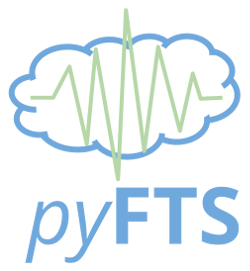pyFTS.models.seasonal package¶
Submodules¶
pyFTS.models.seasonal.SeasonalIndexer module¶
-
class
pyFTS.models.seasonal.SeasonalIndexer.DataFrameSeasonalIndexer(index_fields, index_seasons, data_field, **kwargs)[source]¶ Bases:
pyFTS.models.seasonal.SeasonalIndexer.SeasonalIndexerUse the Pandas.DataFrame index position to index the seasonality
-
class
pyFTS.models.seasonal.SeasonalIndexer.DateTimeSeasonalIndexer(date_field, index_fields, index_seasons, data_field, **kwargs)[source]¶ Bases:
pyFTS.models.seasonal.SeasonalIndexer.SeasonalIndexerUse a Pandas.DataFrame date field to index the seasonality
-
class
pyFTS.models.seasonal.SeasonalIndexer.LinearSeasonalIndexer(seasons, units, ignore=None, **kwargs)[source]¶ Bases:
pyFTS.models.seasonal.SeasonalIndexer.SeasonalIndexerUse the data array/list position to index the seasonality
pyFTS.models.seasonal.cmsfts module¶
-
class
pyFTS.models.seasonal.cmsfts.ContextualMultiSeasonalFTS(**kwargs)[source]¶ Bases:
pyFTS.models.seasonal.sfts.SeasonalFTSContextual Multi-Seasonal Fuzzy Time Series
-
forecast(data, **kwargs)[source]¶ Point forecast one step ahead
Parameters: - data – time series data with the minimal length equal to the max_lag of the model
- kwargs – model specific parameters
Returns: a list with the forecasted values
-
-
class
pyFTS.models.seasonal.cmsfts.ContextualSeasonalFLRG(seasonality)[source]¶ Bases:
pyFTS.models.seasonal.sfts.SeasonalFLRGContextual Seasonal Fuzzy Logical Relationship Group
pyFTS.models.seasonal.common module¶
-
class
pyFTS.models.seasonal.common.DateTime[source]¶ Bases:
enum.EnumAn enumeration.
-
day_of_month= 30¶
-
day_of_week= 7¶
-
day_of_year= 364¶
-
hour= 6¶
-
hour_of_day= 24¶
-
hour_of_month= 744¶
-
hour_of_week= 168¶
-
hour_of_year= 8736¶
-
minute_of_day= 1440¶
-
minute_of_hour= 60¶
-
minute_of_month= 44640¶
-
minute_of_week= 10080¶
-
minute_of_year= 524160¶
-
month= 12¶
-
second= 8¶
-
second_of_day= 86400¶
-
second_of_hour= 3600¶
-
second_of_minute= 60.00001¶
-
year= 1¶
-
-
class
pyFTS.models.seasonal.common.FuzzySet(datepart, name, mf, parameters, centroid, alpha=1.0, **kwargs)[source]¶ Bases:
pyFTS.common.FuzzySet.FuzzySetTemporal/Seasonal Fuzzy Set
pyFTS.models.seasonal.msfts module¶
-
class
pyFTS.models.seasonal.msfts.MultiSeasonalFTS(name, indexer, **kwargs)[source]¶ Bases:
pyFTS.models.seasonal.sfts.SeasonalFTSMulti-Seasonal Fuzzy Time Series
-
forecast(data, **kwargs)[source]¶ Point forecast one step ahead
Parameters: - data – time series data with the minimal length equal to the max_lag of the model
- kwargs – model specific parameters
Returns: a list with the forecasted values
-
pyFTS.models.seasonal.partitioner module¶
-
class
pyFTS.models.seasonal.partitioner.TimeGridPartitioner(**kwargs)[source]¶ Bases:
pyFTS.partitioners.partitioner.PartitionerEven Length DateTime Grid Partitioner
pyFTS.models.seasonal.sfts module¶
Simple First Order Seasonal Fuzzy Time Series implementation of Song (1999) based of Conventional FTS by Chen (1996)
- Song, “Seasonal forecasting in fuzzy time series,” Fuzzy sets Syst., vol. 107, pp. 235–236, 1999.
S.-M. Chen, “Forecasting enrollments based on fuzzy time series,” Fuzzy Sets Syst., vol. 81, no. 3, pp. 311–319, 1996.
-
class
pyFTS.models.seasonal.sfts.SeasonalFLRG(seasonality)[source]¶ Bases:
pyFTS.common.flrg.FLRGFirst Order Seasonal Fuzzy Logical Relationship Group
-
class
pyFTS.models.seasonal.sfts.SeasonalFTS(**kwargs)[source]¶ Bases:
pyFTS.common.fts.FTSFirst Order Seasonal Fuzzy Time Series
